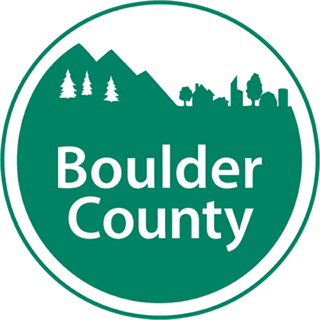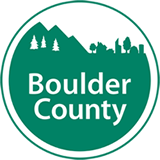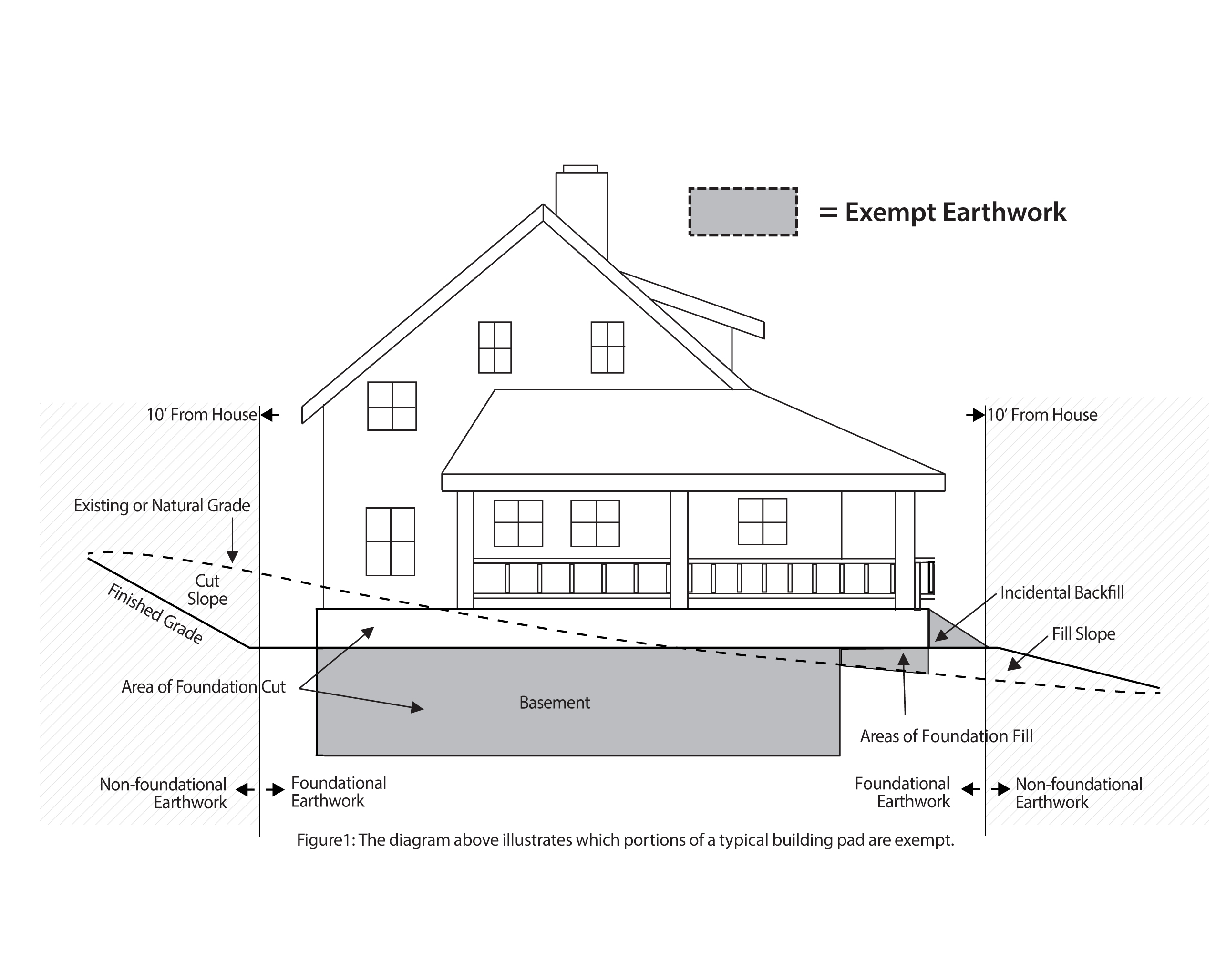Boulder County has identified several land use impacts associated with earth movement including potential for erosion, habitat intrusion, soil instability, visual scarring, and alteration of historic drainage patterns. The County has also identified the location of a project in relation to the site’s topography as perhaps the single biggest determining factor in gauging these impacts. County reviews will verify that thoughtful location and mitigation have played a role in all applications.
Boulder County Planning Publications
Earthwork and Grading - P06
Grading Calculations
Grading is defined by the Boulder County Land Use Code as “Any excavating, filling, or combination thereof.”
- Cut – Earthen materials that are removed from an area of land, such as digging a hole; and
- Fill – The earthen materials that are added to an area of land, such as the placement of soil for a fill slope.
Grading calculations are the result of cut + fill as measured in cubic yards. This means that when one cubic yard of earth is cut, and then if that same cubic yard is used as fill elsewhere on the same property, this is two cubic yards of earth movement (sometimes this method is referred to as “double counting”). This form of measurement takes into consideration the total disturbance of a site.
Include Features Designed to County Specifications
Grading Calculations must Include Features Designed to County Specifications. Earthwork calculations for driveways in particular must include several minimum specifications including cut and fill slopes (typically no steeper than 2:1), provision for emergency access (including pullouts or turnarounds), and required road widths as specified in the Multimodal Transportation Standards.
Please Show Your Work
Supplying any maps, mathematics, or diagrams used to produce a project’s calculations will help prevent delays in application processing. The Community Planning & Permitting Department may require these items to verify calculations.
Review Thresholds
Various reviews are required for earthwork depending on the amount of cubic yards moved. The reviews are:
- 50 cubic yards or less – No review required.
- More than 50 cubic yards, but less than 500 cubic yards – Expedited Site Plan Review and Grading Permit required.
- 500 or more cubic yards – Limited Impact Special Use Review and Grading Permit required.
Note: These thresholds are measured cumulatively. Two individual projects on the same parcel that involve less than 50 cubic yards of earthwork each will require an Expedited Site Plan Review because of their combined total site disturbance.
Exempt Earthwork
Exempt earthwork does not contribute toward the review thresholds described above. Exempt earthwork includes:
- Foundation work and backfill within 10 feet from the structure perimeter;
- Utility installation;
- Normal road base;
- Normal agricultural grading.
Septic system installation is also exempt, except in situations where there are alterations of the ground surface, such as a raised bed.
Important Note: Excess material removed from these features (especially foundations) that is used elsewhere on site as fill is not considered exempt earthwork.
Cut and Fill Slopes
Applications should show thoughtful attention paid to minimizing the impacts of cut and fill slopes. Consider the following when designing your site layout:
- Designing slopes which promote revegetation should be a primary focus. Revegetation controls erosion, improves infiltration, and minimizes visual scarring. It is required after construction for nearly all types of development.
- It is very difficult, under most circumstances, to establish vegetation on slopes steeper than 2:1.
- Although the county minimum for slopes is 1.5:1, reviews will typically require that slopes not exceed 2:1.
- If a slope of 2:1 or flatter cannot be achieved, a geotechnical evaluation may be required. Engineered retaining walls may also be required.
This Publication is Printable


